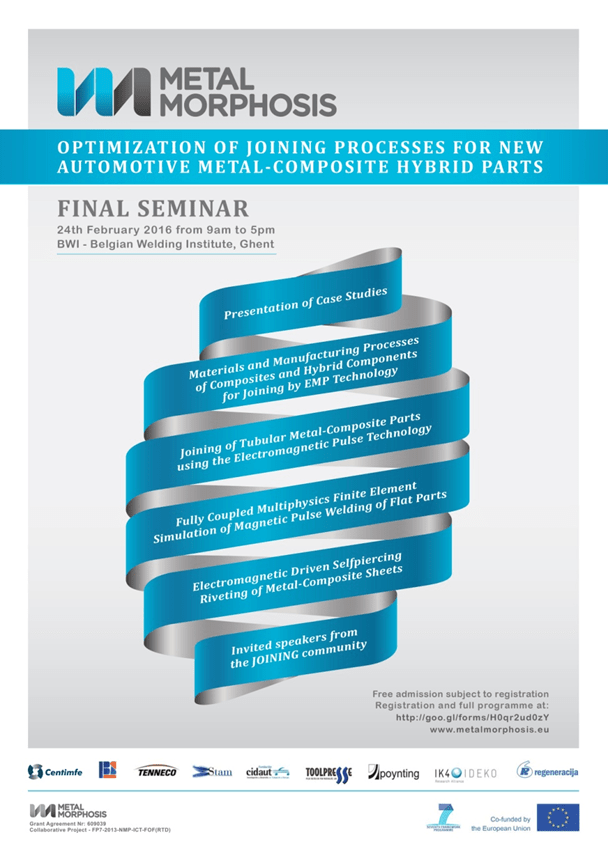The 30 months Metalmorphosis Project is really close to its end. In order to show and demonstrate the results achieved a final seminar is going to be held in the headquarters of the Belgian Welding Institute in Gant on the 24th of February 2016.
The admission to this event is free subjected to registration: http://goo.gl/forms/H0qr2ud0zY
The project has been focused on the development and optimization of hybrid joints between metal and composite hybrid parts in order to obtain enhanced automotive components with integrated functions. The joints are obtained thanks to the application of electromagnetic forces. This technology allows joining composite materials that are not weldable, eliminates the heat affected zone, is a clean process and reduces the cost of the joints. In the first half of the project, important innovations have been introduced in tubular and flat joints working with laboratory specimens, while in the second half, the knowledge generated has been applied to the development of automotive components.
The consortium is formed by nine partners. BWI, Centimfe (leader), Cidaut and Cidaut have focused their effort in the research and development activities. STAM is the responsible of the LCA analysis. Poynting is an SME specialized in the development of electromagnetic joining devices. Regeneracija, Tenneco and Toolpresse are the industrial partners of the project; each of them has developed, with the support of the consortium, a demonstrator to apply the knowledge and demonstrate the advantages of the electromagnetic joining.
Regeneracija has designed a bumper, where the crash box is designed in CFRP, and the cross beam is a sandwich of CFRP and aluminum. All the parts have been assembled attending to the technology developed for flat joints.
Tenneco has improved the design of its shock absorber reducing the number of components and simplifying the assembly process thanks to the integration of functions through electromagnetic tubular joints.
Toolpresse has created a new concept of hybrid pedal brake where both ends are manufactured by plastic injection to fulfill the geometric requirements and the central part is extruded in aluminum obtaining a stiff light component.
